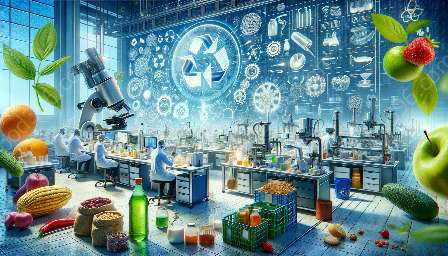Food allergies and intolerance can have a significant impact on individuals' health and quality of life. It's important to understand the causes, symptoms, and how food science and technology play a role in managing these conditions.
Causes of Food Allergies
Food allergies result from the body's immune system overreacting to specific proteins in certain foods. Common food allergy triggers include nuts, shellfish, eggs, and dairy. Genetic factors and a family history of allergies can increase the risk of developing food allergies. Environmental factors and early exposure to allergenic foods may also play a role in the development of allergies.
Symptoms of Food Allergies
The symptoms of food allergies vary widely and can affect different parts of the body. Common symptoms include itching, swelling of the lips and throat, hives, nausea, vomiting, diarrhea, and in severe cases, anaphylaxis, which is a life-threatening emergency. It's essential for individuals with food allergies to identify their triggers and manage their condition through strict avoidance and emergency preparedness.
Food Allergy vs. Intolerance
It's important to distinguish between food allergies and food intolerance. While food allergies involve the immune system's response to specific proteins, food intolerance is a non-immunological reaction to certain foods. Food intolerances often manifest as digestive discomfort, such as bloating, cramps, and diarrhea, and may result from enzyme deficiencies or sensitivity to food additives.
Role of Food Science and Technology
Advancements in food science and technology have contributed to the identification and management of food allergies and intolerances. Researchers are using innovative techniques to develop hypoallergenic food products and improve allergen detection methods. In addition, modern food processing technologies aim to minimize allergen cross-contamination and enhance the safety of food products for individuals with allergies.
Research and Innovation
Ongoing research in food science is focused on understanding the underlying mechanisms of food allergies and intolerance. This includes investigating the role of gut microbiota, genetic predisposition, and environmental factors in the development of food-related immune responses. Innovations in food technology, such as the development of allergen-free food formulations and improved labeling practices, are also essential for individuals with allergies and intolerances.
Education and Awareness
Food science and technology play a crucial role in educating consumers and food industry professionals about food allergies and intolerances. This includes promoting allergen awareness, providing accurate labeling information, and developing effective allergen management practices in food production facilities.
Conclusion
Understanding the causes and symptoms of food allergies, as well as the differentiation from food intolerance, is essential for promoting public health and safety. With the continued advancement of food science and technology, there is hope for improved management and quality of life for individuals with food allergies and intolerances.

